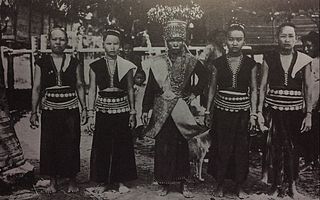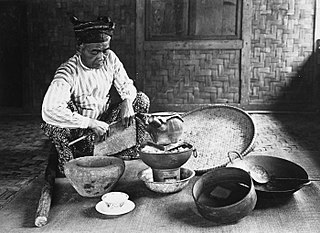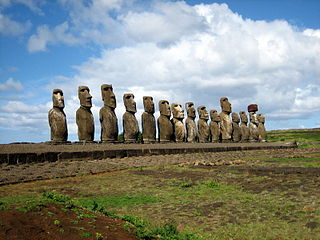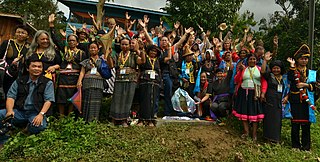 W
WAgimat, also known as anting or anting-anting, is a Filipino word for "amulet" or "charm". Anting-anting is also a Filipino system of magic and sorcery with special use of the above-mentioned talismans, amulets, and charms. Other general terms for agimat include bertud and galing.
 W
WAnito, also spelled anitu, refers to ancestor spirits, nature spirits, and deities in the indigenous Philippine folk religions from the precolonial age to the present, although the term itself may have other meanings and associations depending on the Filipino ethnic group. It can also refer to carved humanoid figures, the taotao, made of wood, stone, or ivory, that represent these spirits. Anito is also sometimes known as diwata in certain ethnic groups.
 W
WThe balete tree are several species of the trees in the Philippines from the genus Ficus that are broadly referred to as balete in the local language. A number of these are known as strangler figs wherein they start upon other trees, later entrapping them entirely and finally killing the host tree. Also called hemiepiphytes, initially, they start as epiphytes or air plants and grow several hanging roots that eventually touch the ground and from then on, encircling and suffocating the host tree. Some of the baletes produce an inferior quality of rubber. The India rubber plant, F. elastica were earlier cultivated to some extent for rubber. Some of the species like tangisang-bayawak or Ficus variegata are large and could probably be utilized for match woods. The woods of species of Ficus are soft, light, and of inferior quality, and the trees usually have ill-formed, short boles.
 W
WA Bobohizan or Bobolian is a high priestess, a ritual specialist and a spirit medium in Kadazan-Dusun pagan rites. The office of Bobohizan or Bobolian, is also the chief preserver of Momolianism, i.e. the philosophy and way of life of the Kadazan-Dusun people.
 W
WA bomoh is a Malay shaman and traditional medicine practitioner. The term is used mainly in Malaysia and parts of Sumatra, whereas most Indonesians use the word dukun. It is often mistranslated into English as medicine man or witch doctor. In colloquial usage, the term bomoh is often interchangeable with another type of shaman or dukun bukan duku, the pawang, but they generally serve different functions. The bomoh is primarily a healer, herbalist, geomancer, and sorcerer. The pawang on the other hand usually specialises in rituals involving weather, nature, animals, and a good harvest. Their roles do overlap however, and both act as an intermediary for the spirits and gods.
 W
WBulul, also known as bul-ul or tinagtaggu, is a carved wooden figure used to guard the rice crop by the Ifugao peoples of northern Luzon.
 W
WA dukun is an Indonesian term for shaman. Their societal role is that of a traditional healer, spirit medium, custom and tradition experts and on occasion sorcerers and masters of black magic. In common usage the dukun is often confused with another type of shaman, the pawang. It is often mistranslated into English as "witch doctor" or "medicine man". Many self-styled dukun in Indonesia are simply scammers and criminals, preying on gullible and superstitious people who were raised to believe in the supernatural.
 W
WFilipino shamans, commonly known as Babaylan were shamans of the various ethnic groups of the pre-colonial Philippine islands. These shamans specialized in communicating, appeasing, or harnessing the spirits of the dead and the spirits of nature. They were almost always women or feminized men. They were believed to have spirit guides, by which they could contact and interact with the spirits and deities and the spirit world. Their primary role were as mediums during pag-anito séance rituals. There were also various subtypes of babaylan specializing in the arts of healing and herbalism, divination, and sorcery.
 W
WFilipino witches are the users of black magic and related practices from the Philippines. They include a variety of different kinds of people with differing occupations and cultural connotations which depend on the ethnic group they are associated with. They are completely different from the Western notion of what a witch is, as each ethnic group has their own definition and practices attributed to witches. The curses and other magics of witches are often blocked, countered, cured, or lifted by Filipino shamans associated with the indigenous Philippine folk religions.
 W
WHantu is the Malay and Indonesian word for spirit or ghost. In modern usage it generally means spirits of the dead but has also come to refer to any legendary invisible being, such as demons. In its traditional context the term also referred to animistic nature spirits or ancestral souls. The word is derived from Proto-Malayo-Polynesian *qanitu and Proto-Austronesian *qaNiCu. Cognates in other Austronesian languages include the Micronesian aniti, Lio language nitu, Yami anito, Taivoan alid, Seediq and Atayal utux, Bunun hanitu or hanidu, Polynesian aitu or atua, and Tsou hicu among the Formosan languages. In terms of concept and place in traditional folklore, it is most similar to the Filipino anito.
 W
WThe hei-tiki is an ornamental pendant of the Māori of New Zealand. Hei-tiki are usually made of pounamu (greenstone), and are considered a taonga (treasure) by Māori. They are commonly called tiki by New Zealanders, a term that originally refers to large human figures carved in wood and to the small wooden carvings used to mark sacred places.
 W
WA heiau is a Hawaiian temple. Made in different architectural styles depending upon their purpose and location, they range from simple earth terraces, to elaborately constructed stone platforms. There are heiau to treat the sick, offer first fruits, offer first catch, start rain, stop rain, increase the population, ensure the health of the nation, achieve success in distant voyaging, reach peace, and achieve success in war (luakini).
 W
WHoʻoponopono is a Hawaiian practice of reconciliation and forgiveness. The Hawaiian word translates into English simply as correction, with the synonyms manage or supervise, and the antonym careless. Similar forgiveness practices are performed on islands throughout the South Pacific, including Hawaii, Samoa, Tahiti and New Zealand. Traditional Hoʻoponopono is practiced by Indigenous Hawaiian healers, often within the extended family by a family member. There is also a New Age practice that goes by the same name.
 W
WHula is a Polynesian dance form accompanied by chant (Oli) or song. It was developed in the Hawaiian Islands by the Polynesians who originally settled there. The hula dramatizes or portrays the words of the oli or mele in a visual dance form.
 W
WThe ʻava ceremony is one of the most important customs of the Samoa Islands. It is a solemn ritual in which a ceremonial beverage is shared to mark important occasions in Samoan society. The Samoan word ʻava is a cognate of the Polynesian word kava associated with the kava cultures in Oceania. Both terms are understood in Samoa.
 W
WIndigenous Philippine folk religions are the distinct native religions of various ethnic groups in the Philippines, where most follow belief systems in line with animism. Generally, these indigenous folk religions are referred to as Anitism or Bathalism or the more modern and less Tagalog-centric Dayawism. Around 0.2% of the population of the Philippines were affiliated with the so-called "tribal religions", according to the 2010 national census.
 W
WIndigenous Philippine shrines and sacred grounds are places regarded as holy within the indigenous Philippine folk religions. These places usually serve as grounds for communication with the spirit world, especially to the deities and ancestral spirits. In some cases, they also function as safeguards for the caskets of ancestors, as well as statues or other objects depicting divine entities.
 W
WThe indigenous religious beliefs of the Tagalog people were well documented by Spanish missionaries, mostly in the form of epistolary accounts (relaciones) and as entries in the various dictionaries put together by missionary friars.
 W
WKaharingan is an animistic folk religion professed by many Dayaks in Kalimantan, Indonesia; particularly Central Kalimantan, although many have converted to Christianity or Islam or follow a syncretic religion. It is estimated that most Dayaks follow their ancient animistic religious traditions (Kaharingan), but often claim to belong to one of the recognized religions in Indonesia to prevent discrimination.
 W
WKava or kava kava is a crop of the Pacific Islands. The name kava is from Tongan and Marquesan, meaning 'bitter'; other names for kava include ʻawa (Hawaiʻi), ʻava (Samoa), yaqona or yagona (Fiji), sakau (Pohnpei), seka (Kosrae), and malok or malogu. Kava is consumed for its sedating effects throughout the Pacific Ocean cultures of Polynesia, including Hawaii, Vanuatu, Melanesia, and some parts of Micronesia, such as [Pohnpei & Kosrae]. Kava can be used for medicinal purposes to treat anxiety.
 W
WMalaysian folk religion refers to the animistic and polytheistic beliefs and practices that are still held by many in the Islamic-majority country of Malaysia. Malaysian folk faith is practiced either openly or covertly depending on the type of rituals performed.
 W
WA marae, malaʻe, meʻae or malae is a communal or sacred place that serves religious and social purposes in Polynesian societies. In all these languages, the term also means cleared and free of weeds or trees. Marae generally consist of an area of cleared land roughly rectangular, bordered with stones or wooden posts perhaps with paepae (terraces) which were traditionally used for ceremonial purposes; and in some cases, a central stone ahu or a'u. In the Rapa Nui culture of Easter Island, the term ahu has become a synonym for the whole marae complex.
 W
WMoai or moʻai are monolithic human figures carved by the Rapa Nui people on Easter Island in eastern Polynesia between the years 1250 and 1500. Nearly half are still at Rano Raraku, the main moai quarry, but hundreds were transported from there and set on stone platforms called ahu around the island's perimeter. Almost all moai have overly large heads three-eighths the size of the whole statue. The moai are chiefly the living faces of deified ancestors. The statues still gazed inland across their clan lands when Europeans first visited the island in 1722, but all of them had fallen by the latter part of the 19th century.
 W
WMomolianism is a belief system of the Kadazan-Dusun people of Sabah.
 W
WA nuno sa punso, or simply nuno, is a dwarf-like nature spirit (anito) in Philippine mythology. It is believed to live in an anthill or termite mound, hence its name, literally 'Ancestor/Grandparent living in the anthill'.
 W
WA pawang is a type of shaman from Malaysia and Indonesia. The pawang deals with magic involving weather, wild animals and spirits, but they may also be employed for cases of sorcery. Pawang are usually associated with mountains in contrast to the traditional healers who are most often linked to rivers.
 W
WThe Sarimanok, also known as papanok in its feminine form, is a legendary bird of the Maranao people, who originate from Mindanao, an island in the Philippines, and part of Philippine mythology. It comes from the words sari and manok. Sari means "assorted" or "various", while manok originally meant "bird" as evidenced by early Spanish colonial sources, but came to mean only "chicken", which is how it is understood today.
 W
WA spirit house is a shrine to the protective spirit of a place that is found in the Southeast Asian countries of Burma, Cambodia, Laos, Thailand, Malaysia, Indonesia, Vietnam and the Philippines. The spirit house is normally in the form of small roofed structure, and is mounted on a pillar or on a dais. They can range in size from small platforms to houses large enough for people to enter. Spirit houses are intended to provide a shelter for spirits that could cause problems for the people if not appeased. The shrines often include images or carved statues of people and animals. Votive offerings are left at the house to propitiate the spirits. More elaborate installations include an altar for this purpose.
 W
WIn Māori mythology, Tiki is the first man created by either Tūmatauenga or Tāne. He found the first woman, Marikoriko, in a pond; she seduced him and he became the father of Hine-kau-ataata. By extension, a tiki is a large or small wooden or stone carving in humanoid form, although this is a somewhat archaic usage in the Māori language. Carvings similar to tikis and coming to represent deified ancestors are found in most Polynesian cultures. They often serve to mark the boundaries of sacred or significant sites.
 W
WTiwah is the Festival of the Dead of the Ngaju people of Central Kalimantan, Indonesia. It is basically a secondary mortuary ritual, where the bones of the deceased are taken from the cemeteries, purified and finally placed in an ossuary. The feast celebrates the final entry of the deceased into paradise where they would meet the ancestors.
 W
WThe Torajans are an ethnic group indigenous to a mountainous region of South Sulawesi, Indonesia. Their population is approximately 1,100,000, of whom 450,000 live in the regency of Tana Toraja. Most of the population is Christian, and others are Muslim or have local animist beliefs known as aluk. The Indonesian government has recognised this animistic belief as Aluk To Dolo.